In an era where innovation drives competitiveness, telecom operators are at a pivotal moment to embrace artificial intelligence (AI) to redefine their networks. Patrick Lopez, a thought leader in telecommunications, has crafted an insightful six-part blog series that demystifies the journey toward AI-Native telecom networks. This series serves as a beacon for operators, offering a clear, actionable roadmap to transform their infrastructure into futuristic, disruptive, and revenue-generating systems. By simplifying complex AI concepts and aligning them with telecom needs, Lopez’s work empowers operators to harness AI’s potential to stay ahead in a rapidly evolving industry.
The essence of AI in telecom lies in embedding intelligence directly into network operations. While AI applications in telecom are not entirely new—think predictive maintenance or customer analytics—the stakes have shifted. For telecom operators, the true power of AI lies in its ability to process vast amounts of real-time data with unprecedented speed and precision. This capability is critical for enabling dynamic network optimization, automation, and ultimately, the vision of fully autonomous networks. Lopez’s blog series emphasizes that achieving this requires a fundamental shift in how operators approach data, infrastructure, and expertise. His roadmap is not just about adopting AI but about building a foundation where AI thrives as an integral part of the network’s DNA.
In the upcoming section of this blog, I will distill the core insights from Lopez’s six-part series, summarizing the key steps telecom operators must take to transition to AI-Native networks. These steps outline a strategic path to overcome challenges, leverage cutting-edge technologies, and unlock new revenue streams through innovation. From rethinking data architectures to fostering internal AI expertise, Lopez’s guidance provides a comprehensive blueprint for operators ready to embrace the future of telecom.
Steps for AI-Native Networks
To transition to AI-Native networks, Patrick has suggested that telecom operators must adopt a strategic approach to leverage AI for real-time automation and autonomous networks. Key steps perceived from the series include:
- Recognize the Need for AI-Native Networks: AI requires real-time data streams for network optimization, demanding a constant understanding of network state, health, and performance across all domains for rapid event-to-action cycles.
- Address Prerequisites:
-
- Data Handling: Collect, normalize, and clean data from complex, multi-vendor telecom environments to ensure quality inputs.
-
- Cloud-Native Architecture: Implement open interfaces, APIs, and technologies like NFV, SDN, and open RAN to enable AI-driven automation.
- Rethink Infrastructure:
-
- Compute: Use GPUs for AI/ML workloads, strategically placing training in private clouds and inference at the network edge.
-
- Networking: Deploy SmartNICs, high-bandwidth Ethernet (100GbE/400GbE), and low-latency protocols like InfiniBand or RoCE for efficient data exchange.
-
- Storage: Adopt high-performance Flash storage with object storage capabilities, supporting scalability, low latency, and hybrid/multi-cloud environments.
- Build Expertise: Foster data literacy and internal AI capabilities to manage proprietary datasets effectively.
- Focus on Proprietary AI: Develop in-house, smaller AI models tailored to specific network needs, retaining control over storage, processing, and training.
- Validate with Real Data: Test and tune vendor solutions using real datasets to ensure performance.
By following this approach, telecom operators can build the necessary foundation and infrastructure to move towards AI-Native networks, enabling the real-time data analysis required for advanced automation and the journey to autonomous networks.
It is crucial to understand the significant time and effort required for these prerequisites to deliver tangible benefits like cost savings.
Link to 6 blogs by Patrick Lopez
Conclusion
The journey to AI-Native telecom networks is not a mere technological upgrade—it’s a strategic transformation that demands vision, investment, and execution across multiple layers of the network stack. Patrick Lopez’s six-part series provides a clear and actionable roadmap for telecom operators to reimagine their infrastructure, data practices, and talent strategy to unlock the full potential of AI. By addressing the prerequisites, adopting cloud-native principles, modernizing compute, network, and storage, and focusing on proprietary AI capabilities, operators can transition from reactive systems to intelligent, autonomous networks. The path is complex and requires long-term commitment, but the reward is a future-proof, agile, and innovation-ready telecom network that can drive efficiency, performance, and new revenue opportunities.
Featured image by Chris F: https://www.pexels.com/photo/black-metal-tower-under-gray-sky-3714195/

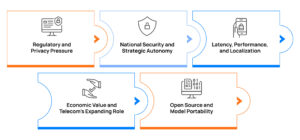
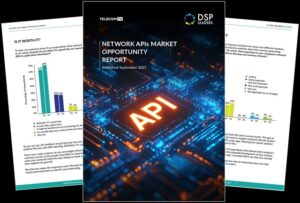
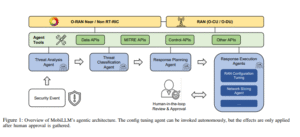
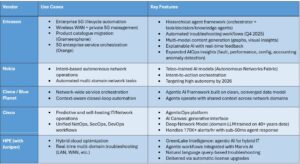
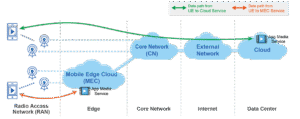
Be First to Comment